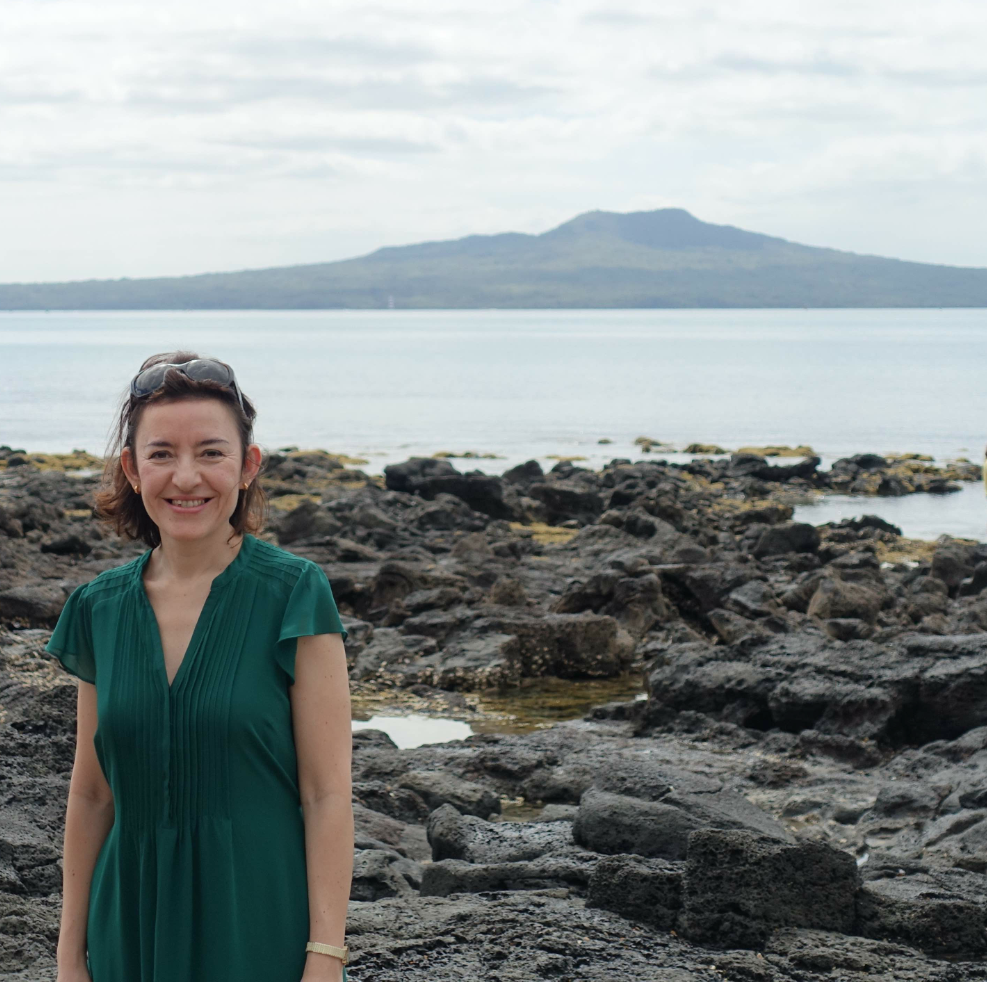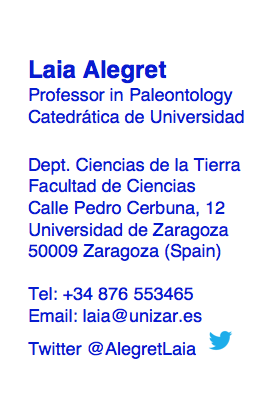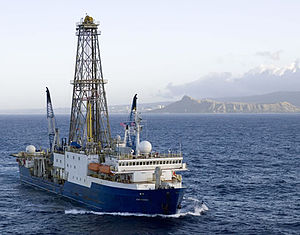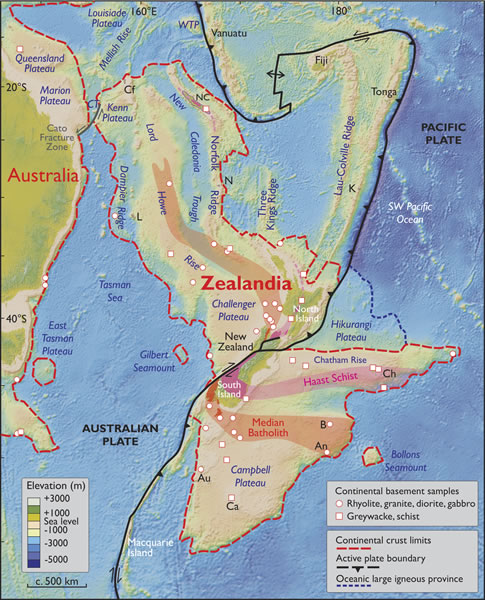
|
|
| Home |
| Publications |
| Curriculum |
| Lectures |
-Professor in Paleontology, Department of Earth Sciences, University of Zaragoza (Spain).
-Fellow of the Royal Academy of Sciences, Spain. Medal Nº 33
-Chair of the International Subcommission on Paleogene Stratigraphy (ISPS).
RESEARCH:
I am interested in the application of benthic foraminifera (microfossils)
in understanding ocean and climate changes using marine sediments from
land-sections and deep-sea cores. The study of fossil shells of benthic
foraminifera provides paleontologists with a valuable record of the climate and paleoenvironmental
changes that occurred millions of years ago.
My main research
interests are:
1) Micropaleontology. Taxonomy, paleoecology, paleoenvironmental reconstructions, extinction events. Deep-sea foraminifera as tracers of global change Alegret et al. (2021) - see summary.
2) Analysis of critical events:
- The impact of an asteroid at the Cretaceous/Paleogene (K/Pg) boundary 66 million years ago. See Henehan et al. 2019, PNAS & Hull et al. 2020 Science -see summary. Alegret et al. 2022
See also Alegret et al., PNAS (2012). And our review in Science (2010) Podcasts (in Spanish): Cienciaes.com, Hablando con cientificos - Climate change during the Cretaceous and the Paleogene, and evolution of marine ecosystems in a greenhouse world.
- Rapid global warming events superimposed on the gradual climate evolution of the planet, as analogues of the current climate change. Cretaceous Ocean Anoxic Events, Paleogene hyperthemals, Paleocene-Eocene Thermal Maximum.
- The Late Miocene-Early Pliocene Biogenic Bloom.
3) Since 2017, I am focused on exploring a new continent... Zealandia. Results of our grand adventure on the high seas of NW New Zealand, IODP Exp 371:
- El Pais
- Alegret et al. (2021), Eocene global warming events in Zealandia; Sutherland et al. (2020), Geographic evolution of Zealandia
- Probing the hidden continent of Zealandia
|
|
4) Outreach and online teaching: Surviving Extinction Trailer
Surviving Extinction Game https://vft.asu.edu/survive/ Use Chrome or Firefox as your browser!
 |
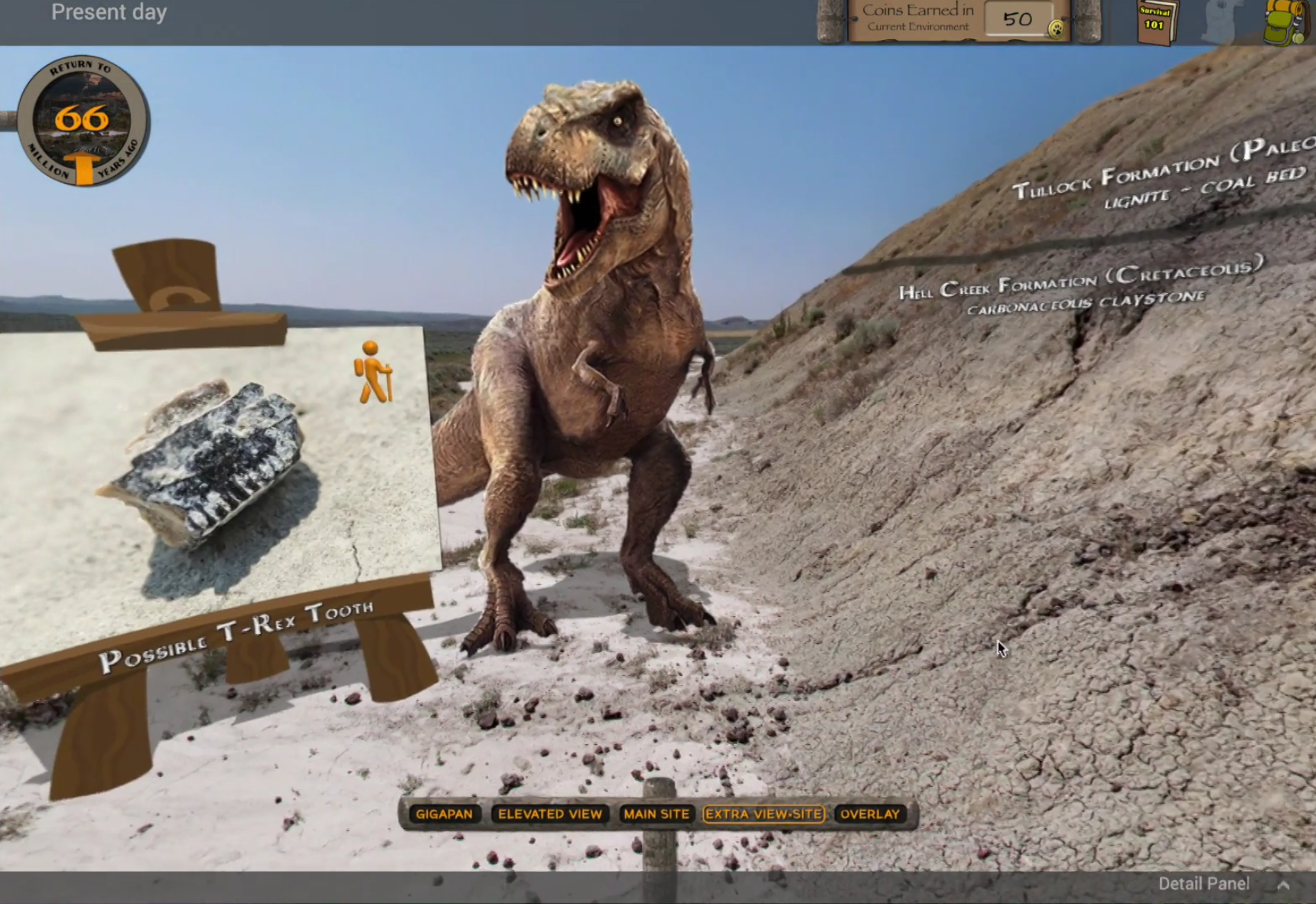 |
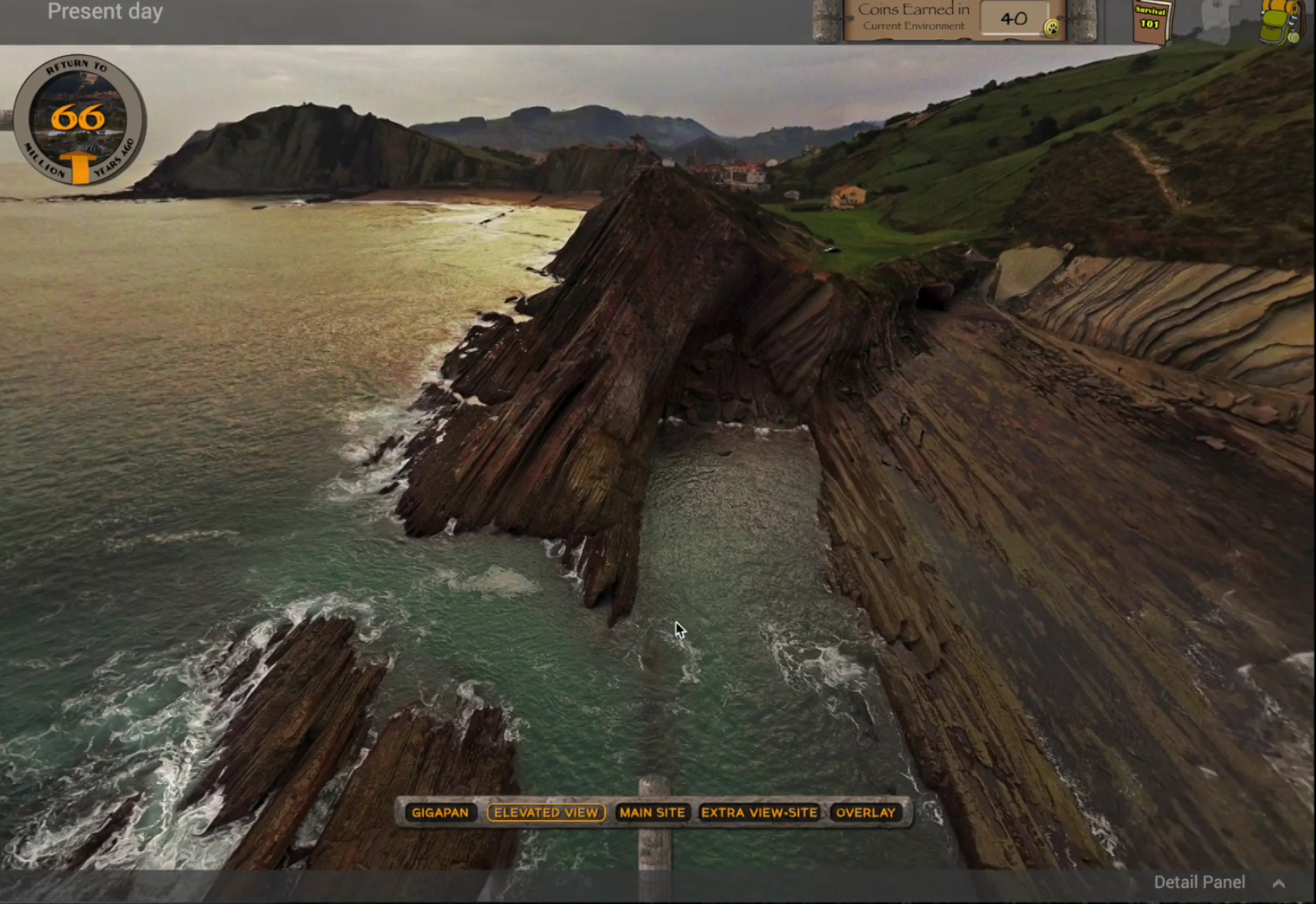 |
In Surviving Extinction you get to choose a modern day animal and then try to chart a path through time up to it from 350 million years ago to today. You take on the roles of the different animal groups in each of the unique environments along the way. The adventure steps through 15 different pre-historic time periods and uses re-created 360° environments from 350 million years ago to the present. It includes 10 real-world expedition sites to discover, hidden keys to find, challenges to solve, and deadly predators to avoid, all wrapped up in a choose your own adventure experience.
| Inicio |
| Publicaciones |
| Curriculum |
-Catedrática de Universidad, Dpto. Ciencias de la Tierra, Universidad de Zaragoza.
-Académica de Número, Real Academia de Ciencias Exactas, Físicas y Naturales. Medalla 33.
-Presidenta de la Subcomisión Internacional de Estratigrafía del Paleógeno (ISPS).
INVESTIGACIÓN:
Estoy interesada en la aplicación de los foraminíferos bentónicos
(microfósiles) para comprender los cambios oceánicos y climáticos
a través del estudio de sedimentos marinos (de secciones continentales
y de sondeos océanicos). El estudio de las conchas fósiles
de foraminíferos bentónicos proporciona a los paleontólogos
un registro muy valioso sobre los cambios paleoambientales que ocurrieron
en el fondo marino hace millones de años.
Mis principales líneas de investigación son:
1) Micropaleontología. Taxonomía, paleoecología, reconstrucciones paleoambientales, eventos de extinción. Foraminíferos bentónicos como indicadores de cambio global durante el Paleógeno Alegret et al. (2021) ver resumen.
2) Análisis de eventos críticos:
- El impacto de un asteroide en el límite Cretácico/Paleógeno
(K/Pg), hace 66 millones de años. Ver Henehan et al. 2019, PNAS & Hull et al. 2020 Science - ver resumen. Alegret et al. 2022
Ver también Alegret et al., PNAS, 2012. Y revisión en Science (2010).-Escuchar podcast en http://cienciaes.com/vanguardia/2010/04/30/la-gran-extincion/ - Cambios climáticos durante el Cretácico y el Paleógeno, y evolución de los ecosistemas marinos en un mundo invernadero.
- Rápidos eventos de calentamiento superpuestos al la evolución gradual del clima, como análogos del actual cambio climático. Eventos Anóxicos Oceánicos (OAEs) del Cretácico, hipertermales del Paleógeno, Máximo Térmico del Paleoceno Eoceno.
- El Bloom Biogénico del Mioceno Superior-Plioceno Inferior.
3) Desde 2017, estoy centrada en la exploración de un nuevo continente....Zealandia. Resultados de nuestra gran aventura en alta mar, Noroeste de Nueva Zelanda, IODP Exp 371:
- El Pais
- Alegret et al. (2021), Eocene global warming events in Zealandia; Sutherland et al. (2020), Geographic evolution of Zealandia
- Probing the hidden continent of Zealandia
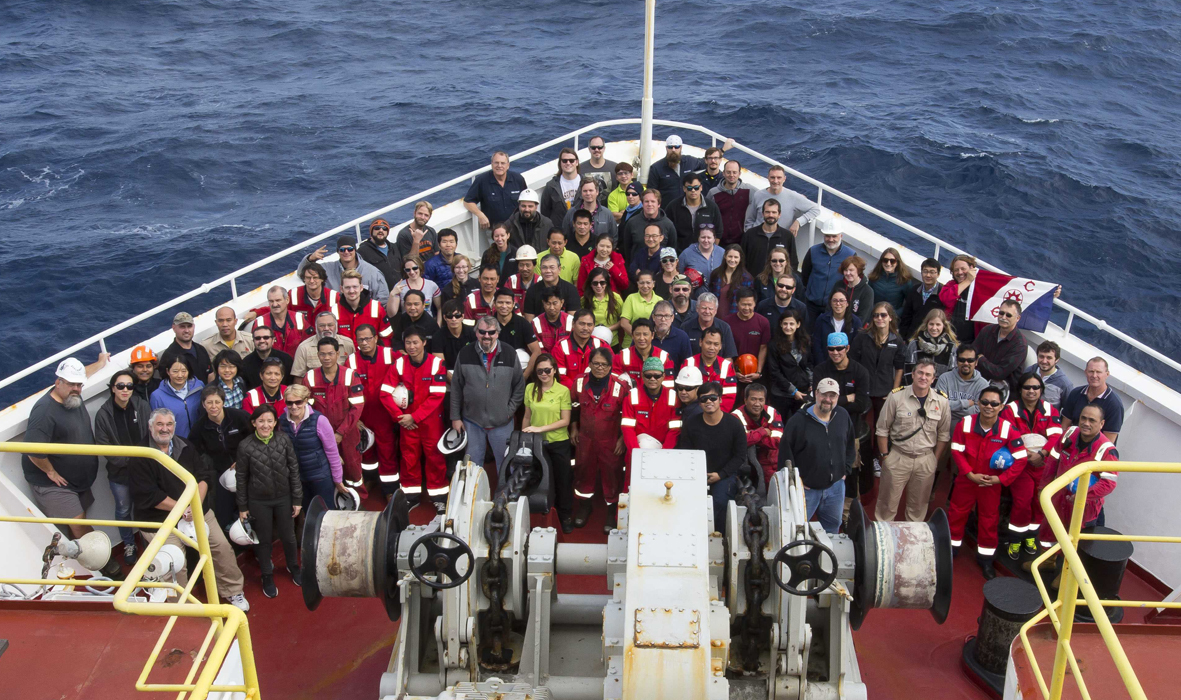 |
Tuve el privilegio de participar en la expedición IODP Expedition 371 en el Océano Pacífico SW (Julio-Septiembre 2017) para explorar Zelandia, el nuevo continente. Orgullosa de haber navegado en el JR Investigación post-campaña financiada por una beca Leonardo de la Fundación BBVA :https://www.redleonardo.es/beneficiario/laia-alegret-badiola/ https://www.redleonardo.es/noticias/la-emocion-descubrir-continente-perdido/
Foto: Participantes en la Expedición IODP 371 |
4) Divulgación y enseñanza virtual: Surviving Extinction Trailer
https://vft.asu.edu/survive/ Usar Chrome o Firefox como navegador
 |
 |
 |
